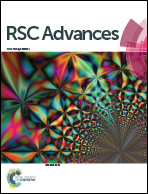Enhanced UHPLC-MS/MS determination of a therapeutic heptapeptide mimic for inflammatory-related diseases in rat plasma: application to a pharmacokinetic study
Abstract
The seven amino acid peptide, GQTYTSG (named as SP), a peptide mimic derived from hypervariable region 1 (HVR1) of the hepatitis C virus (HCV) has presented remarkable anti-inflammatory activities in previous experiments, indicating that it could be a novel therapeutic peptide candidate for different inflammation-related diseases, such as HCV infection and asthma. A heptapeptide mimic discovery study highlighted the need for the development of quantitative bioanalytical assays for measuring the levels of SP. Herein, a reliable and sensitive ultrahigh-performance liquid chromatography (UHPLC) with tandem mass spectrometry (MS/MS) assay was established and validated for the determination of SP in rat plasma. C-11, with two amino acid substitutions compared to SP (Glycine 1 and Glycine 7) and a disulfide, acted as an internal standard (IS). SP and C-11 were isolated from acidified plasma using protein precipitation and the extracts were analyzed by reversed-phase UHPLC-MS/MS detection. We used an SHIM-PACK GISS C18 (2.1 × 100 mm, 1.9 μm) column with water containing 0.2% acetic acid as the aqueous mobile phase and methanol as the organic mobile phase with a 0.3 mL min−1 flow rate. We used an AB SCIEX TripleQuad™ 5500 mass spectrometer equipped with a TurboIon Spray interface and operated it in positive-ion mode. Multiple reaction monitoring (MRM) was used for the quantification of the precursor to the product ion at m/z 713.3 → 432.2 for SP and m/z 803.2 → 539.1 for IS. The method was fully validated according to the US Food and Drug Administration (FDA) guideline (2018), and provided satisfactory accuracy, precision, and reproducibility for the quantification of SP in rat plasma. Excellent linearity was achieved (r > 0.9977) over a linear dynamic range of 0.1–200 ng mL−1 with a lower limit of quantification (LLOQ) of 0.1 ng mL−1. The validated assay was applied to gain the pharmacokinetic (PK) parameters and the concentration–time profile for SP after subcutaneous administration in rats.



 Please wait while we load your content...
Please wait while we load your content...